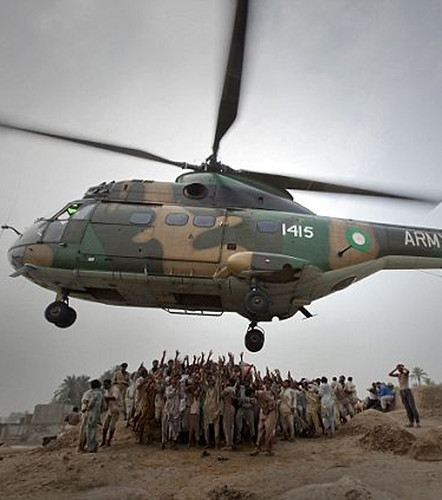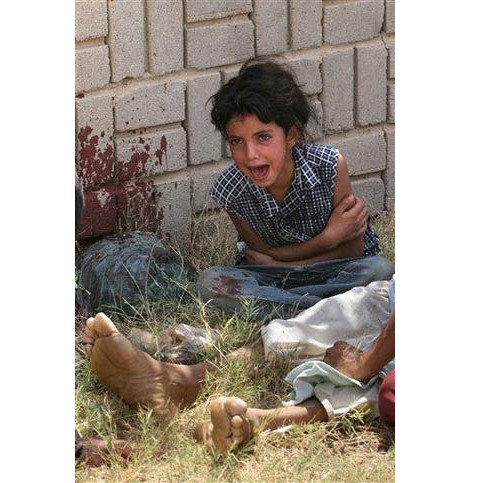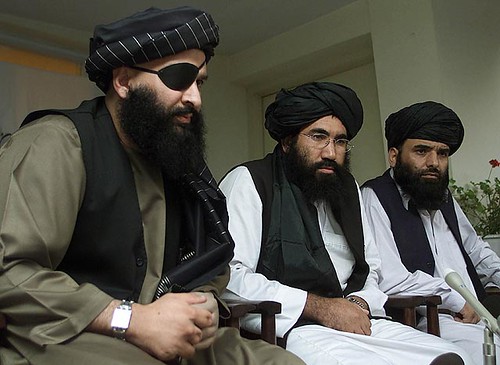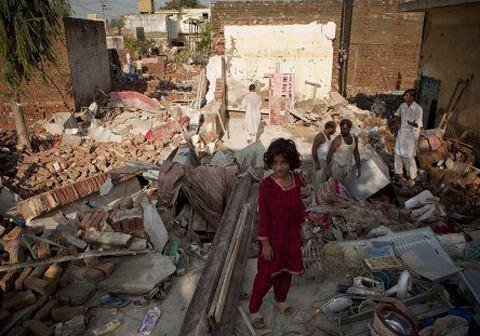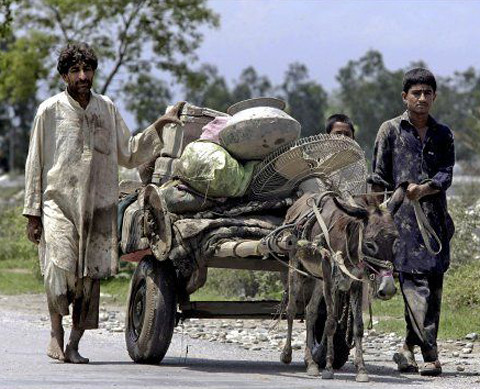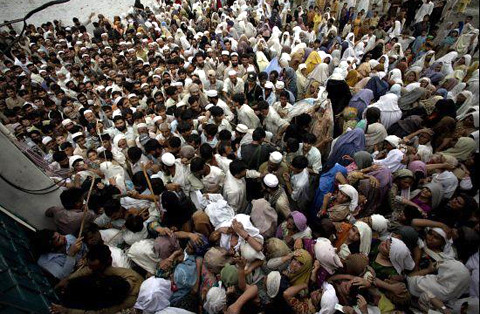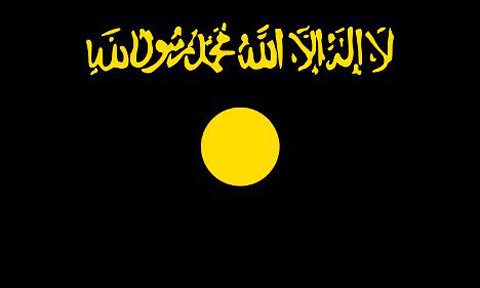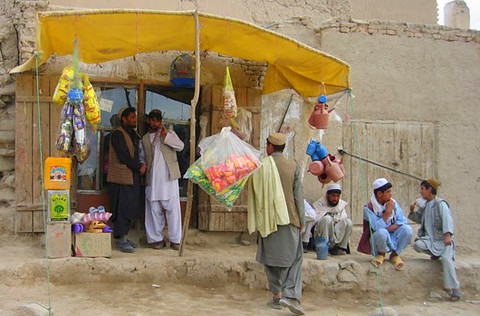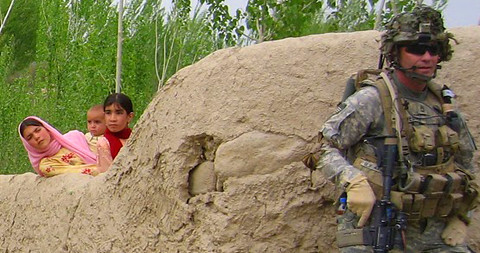Author's posts
Aug 16 2010
Population Dynamics of Places in the News
Population 1960-2008
I’ve been watching the great HBO series Six Feet Under on DVD for about a week, and yesterday I saw the episode which ends with Ruth Fisher singing along with a tape of Joni Mitchell. I didn’t even recognize the song, but a google search for the lyrics revealed it was Woodstock.
Then last night I had a dream about walking up a long hill with the same song playing in my head, but when I came to the crest and looked down, instead of mobs at a concert I saw a flood like an ocean, and millions of people washed away in it.
“And maybe it’s the time of year
or maybe it’s the time of man
and I don’t know who I am
but you know life is for learning.”
“We are stardust,
billion year-old carbon,
we are golden,
caught in the devil’s bargain
and we got to get ourselves
back to the garden.”
Aug 15 2010
99ers on the Street

They’re known as the 99ers – laid-off people who have gone 99 weeks without finding work, at which point their jobless benefits expire.
More than 1.4 million Americans have been unemployed for at least that long – victims of an economy that has not been creating many jobs.
The 99ers took a stand on Wall Street Thursday. A throng of desperate job-hunters — who’ve been out of work so long their unemployment benefits ran out — staged a protest rally on the steps of Federal Hall.
“Are you going to tell us, President Obama and Congress, that our lives are not worth saving?” asked 99er Connie Kaplan.
Aug 14 2010
Floods Leave 20,000,000 People Homeless in Pakistan
(Prime Minister Yousaf Raza) Gilani said 20 million people were now homeless and called on Pakistanis to rise to the occasion, amid growing fears of social unrest or even a military takeover following the government’s shambolic response to the floods.
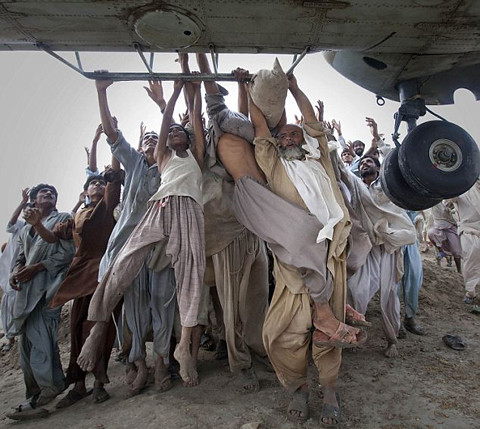
Marooned flood victims looking to escape grab the side bars of a hovering Army helicopter which arrived to distribute food supplies.
You can make a secure donation to Save the Children for victims of the floods via Paypal here.
Aug 14 2010
Photo of a Child in Iraq
I can’t even remember where I found this photo, for a diary that never got written, and I never had much to say about it. It reminds me of the last line of Rilke’s poem, Archaic Torso of Apollo.
“You must change your life.”
Aug 12 2010
Back to the Future in Iraq
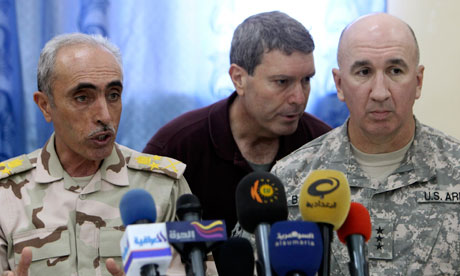
Iraqi Army Chief of Staff Lieutenant General Babakir Zebari, US Lieutenant General Michael Barbero, and unidentified Blackwater bodyguard-zombie-cannibal
Iraq’s Top General Says US Army Must Remain Until 2020
“If I were asked about the withdrawal, I would say to politicians: the US army must stay until the Iraqi army is fully ready in 2020.”
Ready for what?
But Reuters military analyst Adil al-Azawi actually answered that question.
“The statement of Lieutenant General Babakir Zebari is professional and has a high degree of credibility,” said Azawi, a former army colonel. “The Iraqi army does not have even 20 percent of the arms of the armies of neighboring countries.”
For example, Iraq has ordered 140 Abrams tanks but got its first shipment of 11 just recently.
So apparently the the ultimate outcome of US intervention in Iraq after ten more years will be replacing Saddam’s rust-bucket army and Soviet-era tanks with a state-of-the art miltary establishment capable of defending itself or attacking neighboring countries…
…like Kuwait, and that brings us back to our future of endless idiocy and senseless wars.
Aug 11 2010
Liberal Islam and Joan of Arc in Syria
Although the United States destroyed the most secular government in the Middle East with its genocidal invasion and occupation of Iraq, Syria still remains as a last lonely outpost of religious moderation among so many racist and theocratic rogue-nations like Israel and Iran, and while the recent French initiative to ban the burqa was denounced by liberal pundits from Weston-Under-Lizard to Honolulu, Syria quietly liberated hundreds of thousands of muslim women from the miserable mask-gag-muzzle-suffocation of the niqab.
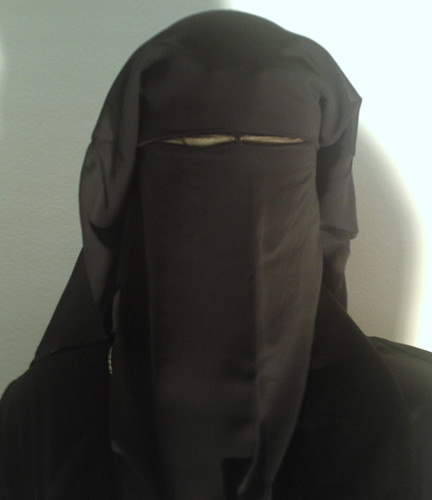
Banned in Syrian schools and universities!
Syria has banned the niqab, the Islamic head scarf that covers the face and leaves an opening for the eyes, from its private and public universities in an effort to protect the country’s secular identity, a Foreign Ministry official said Monday. The ban does not affect the hijab, the head scarf that does not cover the face, which many Syrian women wear.
“Syria is adamant about its secularism,” says Joshua Landis, director of the Center for Middle East Studies at the University of Oklahoma. “If the next generation is going to be raised to embrace the strict Islamic values for which the niqab is the expression, it will undermine the project Syria is trying to build, of secularism and coexistence of religions. “
And as revolutionary as this ban may appear to repulsive misogynists masquerading as “Islamic scholars,” it nevertheless recalls one of the most glorious episodes of emergent Syrian nationalism in the Twentieth Century.
In 1920, a 21-year old girl from Damascus defied tradition and took off her milaya (traditional, full-length veil) when volunteering to fight in the Syrian army against the invading French army. She paraded through the streets of Damascus unveiled, with a rifle strapped on her shoulder, creating shockwaves throughout conservative circles of the Syrian capital.
Moderates and seculars hailed her as the Syrian Joan of Arc while she defended her action saying that she was off to battle, defending her homeland from occupation – the noblest deed on Earth – and not unveiling to attract or seduce the opposite sex. The wives of the Prophet Mohammed, she reminded her critics, had participated in battle with him unveiled.
This was Naziq al-Abid, and her story didn’t end with a “wardrobe malfunction” in Damascus.
She fought at the infamous battle of Maysaloun on July 24, 1920, where the Syrian Army was crushed, and tried but failed to heal the wounds of General Yusuf al-Azma, the minister of war who was killed in combat. Faysal promoted her to the honorary rank of general in the Syrian Army. She was the first woman to attain such a title.
In 1921, she became President of the Syrian Red Cross and in 1922, founded her own organization, modeled on the international Red Cross, and called it the Red Crescent. In 1925-1927, she took up arms in the Syrian Revolt against the Mandate, living the life of an outlaw in the Ghutta orchards surrounding Damascus. In 1928, Abid was pardoned, returning to Syria to co-founded the Damascene Women Awakening Association.
.
Aug 09 2010
Tragic and Shambolic Pakistan
In almost every way, human tragedies play out in Pakistan just like anywhere else.
There isn’t much difference between this house, which floods destroyed in Pakistan yesterday, and similar rubble in Gaza or Afghanistan…
…and likewise as a surge of flood-water descends dam by dam along the Indus River, and these guys join more than 42,000,000 other refugees all around the world.
42,000,000 refugees right now, and now 3,000,000 more in Pakistan, and almost all of them fighting for food and water in miserable camps like this camp in Peshawar.
But as soon as we move beyond the level of universal human experience, the politics of Pakistan exhibits its own more or less uniquely shambolic individuality, as brilliantly illustrated by the following shambolic two-step.
Aug 08 2010
Our Morbid Economy
The monthly jobs report from the Bureau of Labor Statistics was already bad enough.
Total nonfarm payroll employment declined by 131,000 in July, and the unemployment rate was unchanged at 9.5 percent, the U.S. Bureau of Labor Statistics reported today. Government employment fell by 202,000 in July, largely reflecting the loss of 143,000 temporary workers hired for Census 2010. Private-sector payroll employment edged up by 71,000.
And meanwhile the estimate of jobs lost in June was revised upward to 221,000 from 125,000. That adds up to 352,000 jobs lost in the last two months.
Incomes also stagnated in June, failing to increase for the first time since September, compared with a 0.2 percent gain projected by the survey median. Wages and salaries in June fell 0.1 percent, the first drop since September.
The number of contracts to purchase previously owned houses fell 2.6 percent in June, indicating demand kept unraveling after the expiration of a homebuyer tax credit. The index of pending home resales dropped to 75.7, the lowest level since data began in 2001, figures from the National Association of Realtors showed. Economists projected sales would rebound 4 percent following a 30 percent plunge in May that was also the biggest on record.
The Commerce Department reported that factory orders declined 1.2 percent in June to a seasonally adjusted $406.4 billion. Analysts expected a smaller drop. The agency also revised May’s decline to a sharper 1.8 percent instead of 1.4 percent.
In the first half of 2010, more than 1.6 million U.S. properties were hit with foreclosure filings, which include bank repossessions, default notices and auction sale notices. That’s up 8 percent from the first six months of 2009 and puts the U.S. on pace to top 3 million filings this year, including more than 1 million bank repossessions. While subprime borrowers and bad loans led the surge in foreclosures in 2008 and 2009, this year’s wave comes from homeowners who’ve lost their jobs.
Under-employment, as measured by Gallup, was 18.4% in July, essentially unchanged from 18.3% at the end of June and in mid-July. Underemployment peaked at 20.4% in April.
Americans aged 18 to 29 had easily the highest underemployment rate in July of any age group, at 28.4%.
28.4% under-employment for the kiddies!
And of course that reminds me of my favorite new song, which we might as well adopt as the national anthem.
.
Aug 06 2010
Obama’s Head in the A-Hole
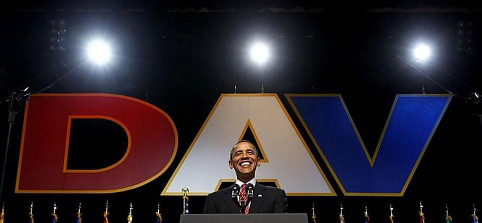
Obama addresses a conference of Disabled American Veterans, August 2, 2010
“Does Obama sound like Bush?” asks the Christian Science Monitor, and answers…
Obama is indeed carrying out an agreement reached by the Bush administration that laid out the timetable for withdrawal.
Gareth Porter at Asia Times Online provides a little more context.
Seventeen months after President Barack Obama pledged to withdraw all combat brigades from Iraq by September 1, 2010, he quietly abandoned that pledge on Monday, admitting implicitly that such combat brigades would remain until the end of 2011.
Obama’s apparent pledge of withdrawal of combat troops by the September 1 deadline in his February 27, 2009, speech generated headlines across the commercial news media. That allowed the administration to satisfy its anti-war Democratic Party base on a pivotal national security policy issue.
At the same time, however, it allowed Obama to back away from his campaign promise on Iraq withdrawal, and to signal to those political and bureaucratic forces backing a long-term military presence in Iraq that he had no intention of pulling out all combat troops at least until the end of 2011.
He could do so because the news media were inclined to let the apparent Obama withdrawal pledge stand as the dominant narrative line, even though the evidence indicated it was a falsehood.
Time Magazine was likewise skeptical about how much change Obama has imposed on the Bush paradigm.
It’s not hard to see why many skeptics see little more than a rebranding message in President Obama’s announcement that U.S. troop levels in Iraq will soon stand at 50,000 and that their mission would be to “train and advise Iraqi security forces, conduct partnered and targeted counterterrorism operations and protect ongoing U.S. civilian and military efforts.”
For one thing, that’s what they’ve been doing for quite some time now, in keeping with the 2008 Status of Forces Agreement (SOFA) concluded between the Bush Administration and the Iraqi government. The SOFA moved U.S. troops out of Iraq’s cities last summer and ended independent U.S. military operations – today they’re required to operate in tandem with Iraqi forces.
And apart from daily bombings and political assassinations, Obama’s perky optimism about American “accomplishments” in Iraq is also belied by many inconvenient factoids.
“Much of the violence has occurred because there is no government, because nobody knows what the future is,” said Anthony Cordesman, a military analyst at the Center for Strategic and International Studies who has periodically advised top U.S. commanders in Baghdad.
In the inconclusive March 7 elections, the heavily Sunni-backed Iraqiya coalition led by former premier Ayad Allawi won 91 seats compared to 89 for Prime Minister Nouri al-Maliki’s mainly Shiite Rule of Law coalition, but neither won the 163-seat majority necessary to govern.
As the political wrangling for allies draws out, insurgents have continued their deadly attacks in what appears to be an attempt to take advantage of the political vacuum to re-ignite sectarian tensions.
But so what if Iraq doesn’t have a government? At least they have a flag!
Suspected Al-Qaeda fighters killed five Iraqi soldiers in a brazen dawn attack Tuesday at a western Baghdad checkpoint and planted the terror group’s black banner before fleeing the scene, officials said.
It was the second time in a week that Al-Qaeda’s flag has appeared at the scene of an attack.
Has all the bloodshed, death and destruction counted for so little?
Yes.
Aug 02 2010
“Accentuating the Positive” in Iraq
When gunmen ambushed Iraqi security checkpoints in a large Sunni neighborhood of Baghdad last Thursday, terrorized residents said the attack reminded them of the worst days of the war. The United States military said it was unaware of any gunfighting.
On Sunday, when The Associated Press reported that July was the worst month for Iraqi casualties in more than two years, the United States military denied it. Yes, Iraqis are still dying, the American command said, but in strikingly fewer numbers than Iraqi government ministries have told the news media.
As American forces exit Iraq, with only 50,000 to remain by the end of this month and all to be withdrawn in a year, the American military command is accentuating the positive.
Aug 01 2010
Art is weird. Money is beautiful.

Rich people observe an artist in the Hamptons
The artists are pretty well gone now, all but the wealthiest ones. Everybody knows that Jackson Pollock and Lee Krasner couldn’t find a quarter-share in a renovated chicken coop in a market where even a teardown in Sag Harbor – long since elevated from its lowly status as the poor relation of hamlets like East Hampton – is priced at $1.8 million.
Or maybe money is weird, and art is elsewhere.
Jul 30 2010
Lost and Alone in Logar Province
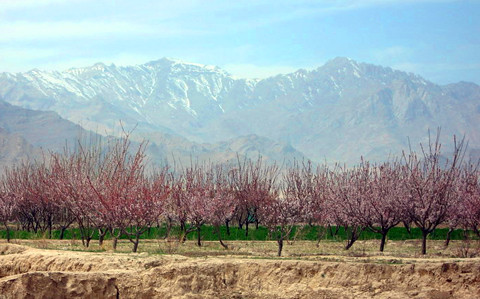
An orchard in Logar Province, Afghanistan
Three U.S. troops died in blasts in Afghanistan, bringing the death toll for July to at least 63 and surpassing the previous month’s record as the deadliest for American forces in the nearly 9-year-old war.
The American deaths this month include Petty Officer 2nd Class Justin McNeley from Kingman, Arizona, and Petty Officer 3rd Class Jarod Newlove, 25, from the Seattle area. They went missing last week in Logar Province south of Kabul, and the Taliban announced they were holding one of the sailors.
McNeley’s body was recovered there Sunday, and Newlove’s body was pulled from a river Wednesday evening, Afghan officials said. Taliban. The discovery of Newlove’s body only deepened the mystery of the men’s disappearance nearly 60 miles (100 kilometers) from their base in Kabul.An investigation is under way, but with both sailors dead, U.S. authorities remain at a loss to explain what two junior enlisted men in noncombat jobs were doing driving alone in Logar – much of which is not under government control.


